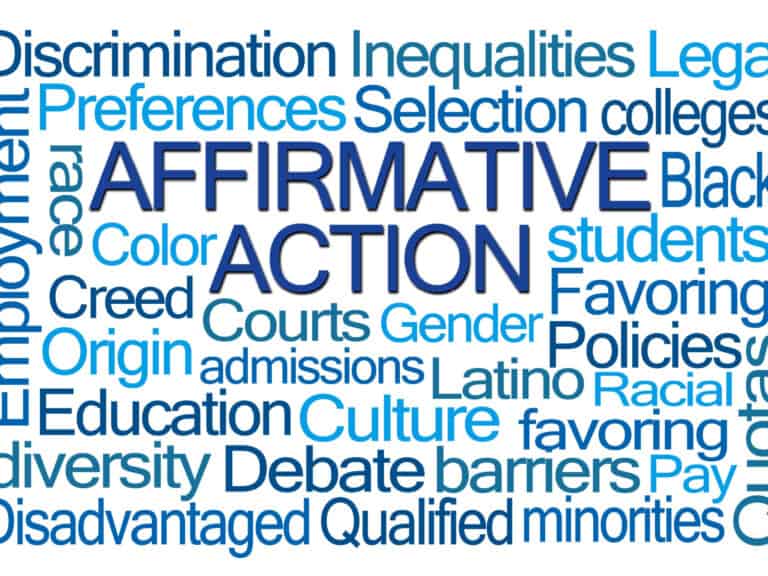Does a Likely Letter Guarantee Admission?
Nothing can make college-bound high schoolers happier than knowing that their dream schools are dreaming about admitting them, which can come in the form of a likely letter. Whether you have one in your hands or are hoping to receive one, you can’t help but wonder if it’s something that guarantees admission.
Likely letters do not guarantee admission. They serve as indicators that the institutions that sent them are interested in admitting the recipients. Only a small percentage of competitive applicants receive likely letters. Early writes and acceptance letters, on the other hand, guarantee acceptance.
Waiting for a likely letter to come your way or just received one? Don’t stop reading now.
Below, you will come across just about everything there is to know about likely letters. By the time you get to the end of this post, you will have a much better idea of the reason behind that likely letter your dream school has sent you — or whether or not you should worry if it seems like you will never receive one.

Why Do Colleges Send Likely Letters?
Some colleges and universities send likely letters to top applicants in order to keep them engaged and interested to attend. This is beneficial for both parties — the recipients can enjoy increased confidence that an acceptance letter may come their way and the senders can enjoy increased yield rates.
Top institutions are the ones that usually send likely letters. That’s because they are always competing to get some of the brightest and most talented students out there.
It’s also a way for them to reap more prestige through impressive yield rates.
Simply put, a yield rate is the percentage of students who choose to enroll after getting an offer to enroll. The higher the yield rate, the more desirable a college appears.
Thanks to likely letters, colleges can keep their yield rates high — it encourages the recipients to put their trust and hope in the schools that sent them likely letters.
When are Likely Letters Sent Out?
Generally speaking, likely letters arrive in February. However, it’s not unlikely for some of them to arrive in December just before the year ends or sometime in March the following year. In most instances, colleges and universities that send likely letters get in touch with top athletes earlier than everybody else.
You can think of a likely letter as a prelude to an acceptance letter — although it’s important to note that a rejection letter may still follow it since a likely letter, as mentioned earlier, isn’t synonymous with admission.
If one thing’s for sure, it’s that likely letters arrive earlier than admissions letters.
Needless to say, you will receive a likely letter earlier — if you are bound to get one — if you applied Early Decision or Early Action.
On the other hand, you will receive a likely letter at a later time if you applied Regular Decision. But because only around 16% to 17% of all admits-to-be get likely letters, don’t waste your time and energy waiting for one.
Related Article: How is Early Decision Enforced? Myths and Facts
Colleges That Send Likely Letters
The Ivy Leagues are known to send likely letters. The same is true for various prestigious colleges and universities. Many top-tier liberal arts schools are also known to send them. As a general rule of thumb, the more selective or prestigious the school, the higher the chances of it sending likely letters.
It’s hard to determine the exact number of colleges and universities in the US that send likely letters. That’s because not all of those who have the habit of sending them openly state that they actually do.
However, the following are some of those that are proven to send likely letters to applicants they like:
- Amherst College
- Barnard College
- Brandeis University
- Brown University
- Bowdoin College
- Clark University
- Columbia University
- Cornell University
- Dartmouth College
- Duke University
- Grinnell College
- Harvard University
- MIT
- Princeton University
- Rice University
- Smith College
- Stanford University
- UCLA
- University of Chicago
- University of North Carolina at Chapel Hill
- University of Pennsylvania
- University of Virginia
- William & Mary
- Williams College
- Yale University
Unlike most colleges and universities that send likely letters, Yale University openly admits that it does send top applicants likely letters. As a matter of fact, there is a letter from the Ivy League school’s Admissions Office itself that confirms this matter. And this brings us to this pressing question…
How Do You Get a Likely Letter From Yale?
To get a likely letter from Yale University, one’s application must be competitive in the first place. This is especially true as the Ivy League is very selective. According to Yale, the applicant should be a strong scholar, athlete or contributor in other areas, making him or her desired by many schools.
Just like other institutions that send likely letters, Yale University sends them to exceptional students only.
So, in other words, likely letters from the prestigious school are sent to strong applicants who are likely to get an acceptance letter anyway, the kinds that are certainly being recruited by many other top colleges and universities — Yale simply wants to get its hands on these exceptional contenders.
However, as expected, a likely letter does not guarantee admission into Yale University. According to the school itself, an official admission letter will follow suit only if the recipient of the likely letter succeeds in sustaining his or her current level of accomplishment, which is exactly what makes him or her wanted by the Ivy League.

Likely Letters vs. Early Writes: What’s the Difference?
A likely letter is something that says the recipient might get an acceptance letter. Meanwhile, an early write guarantees that the recipient will get an acceptance letter. Still, it’s a must for the recipient to maintain his or her level of high school accomplishment to avoid rejection or rescindment.
You can think of a likely letter as a sign that you have a 50/50 chance of getting admitted into the institution.
On the other hand, an early write gives you 100% assurance that an acceptance letter will come your way anytime soon. The earlier the admission plan, the earlier an early write will get to you — if your application is so impressive that it warrants an early write. Just like likely letters, early writes help boost an institution’s yield rate.
Some of the most competitive colleges and universities in the country are known to send early writes. Many elite liberal arts colleges are known to send them, too. But no matter which school sends it, one thing stays true: while an early write guarantees admission, the sender may, if necessary, still send a rejection letter or rescind an offer to enroll.
Just Before You Aspire to Get a Likely Letter
Refrain from assuming that just because you received a likely letter from your top-choice college an acceptance letter will surely follow suit.
A likely letter does not guarantee acceptance, although it definitely serves as an indicator that the institution is considering giving you an offer to enroll anytime soon.
Similarly, refrain from thinking that receiving no likely letter is similar to a rejection letter — only a small percentage of successful applicants get likely letters before getting acceptance letters in the mail.
It’s important to keep in mind that not all colleges and universities send out likely letters.
Chances are that, even if you have a competitive application, you will not receive a likely letter if it’s not customary for the school to send one.
What you can do instead is compare your academic profile with those of students typically admitted into the institution in order to have an idea of whether it’s an acceptance or rejection letter you will get.
Related Questions
Do you have to reply to a likely letter?
Recipients of likely letters are not required to respond. However, if a likely letter explicitly encourages the recipient to write a reply, it’s definitely a good idea to send a letter to the sender. Recipients of likely letters may choose to respond, even if it’s not a requirement, if they are too excited or thankful for the gesture.
What are other signs that a college is likely to accept you?
Besides likely letters, colleges may also demonstrate their interest in applicants by sending them early writes, which, unlike likely letters, guarantee 100% acceptance. Some colleges entice top applicants to commit by offering them merit-based scholarships or putting them on priority waitlists.
Related Article: Early Decision Strategy for Getting Admitted to Best College
Disclaimer: The views and opinions expressed in this article are those of the authors and do not necessarily represent those of the College Reality Check.





